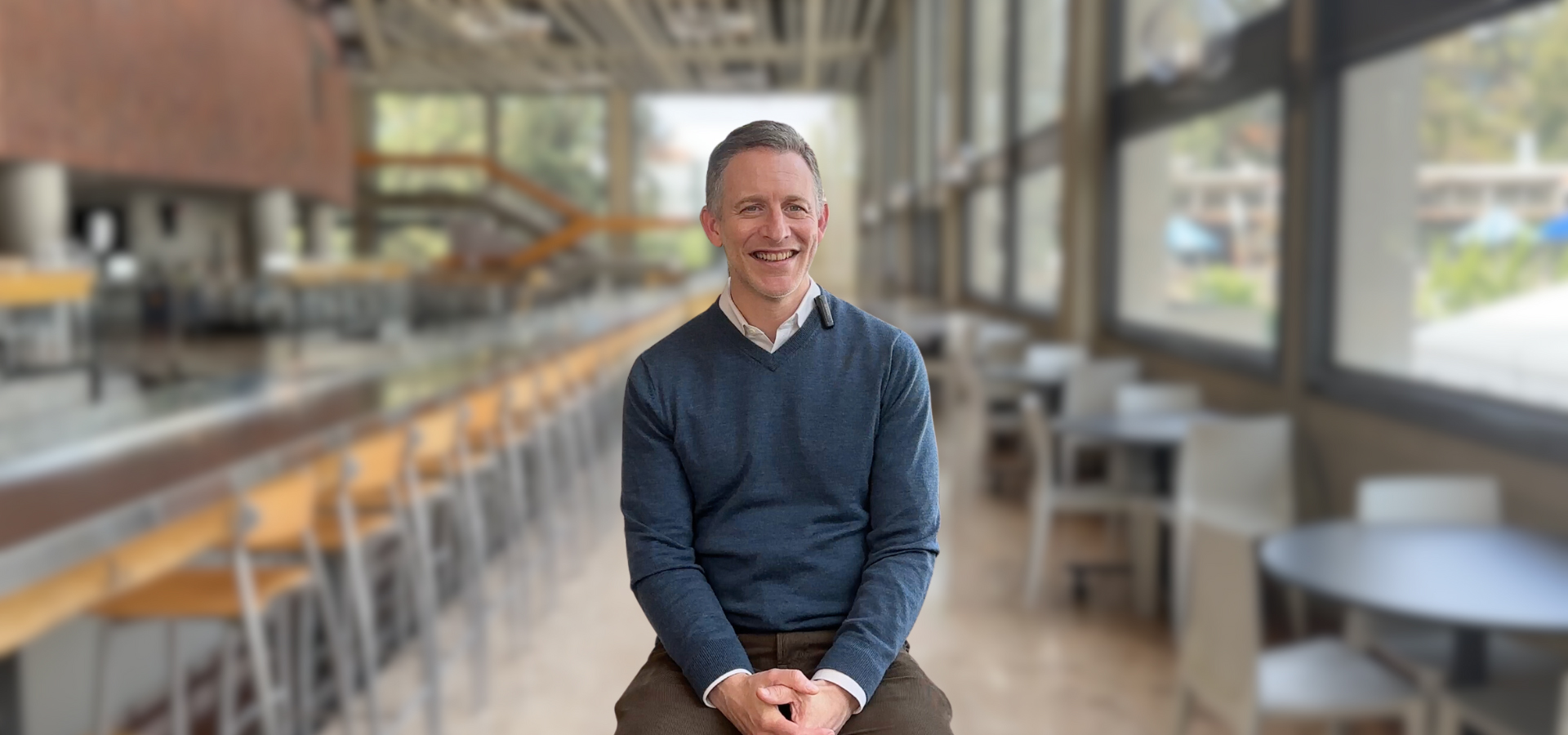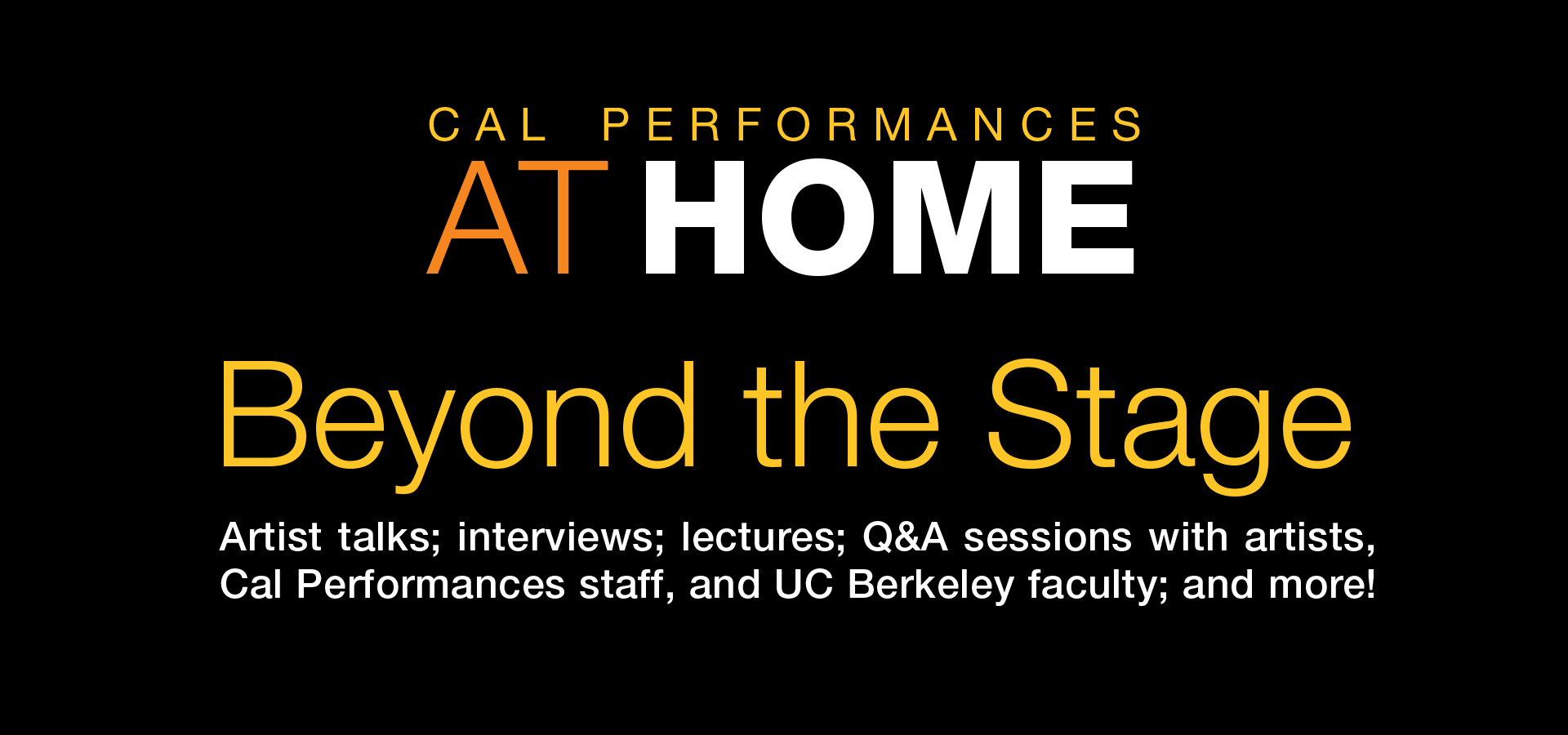
Cal Performances at Home is much more than a series of great streamed performances. Fascinating behind-the-scenes artist interviews. Informative and entertaining public forums. The Cal Performances Reading Room, featuring books with interesting connections to our Fall 2020 programs. For all this and much more, keep checking this page for frequent updates and to journey far, far Beyond the Stage!
Major support for Beyond the Stage is provided by Bank of America.
Beyond the Stage
Tribute to a Terrific 2023–24 Season
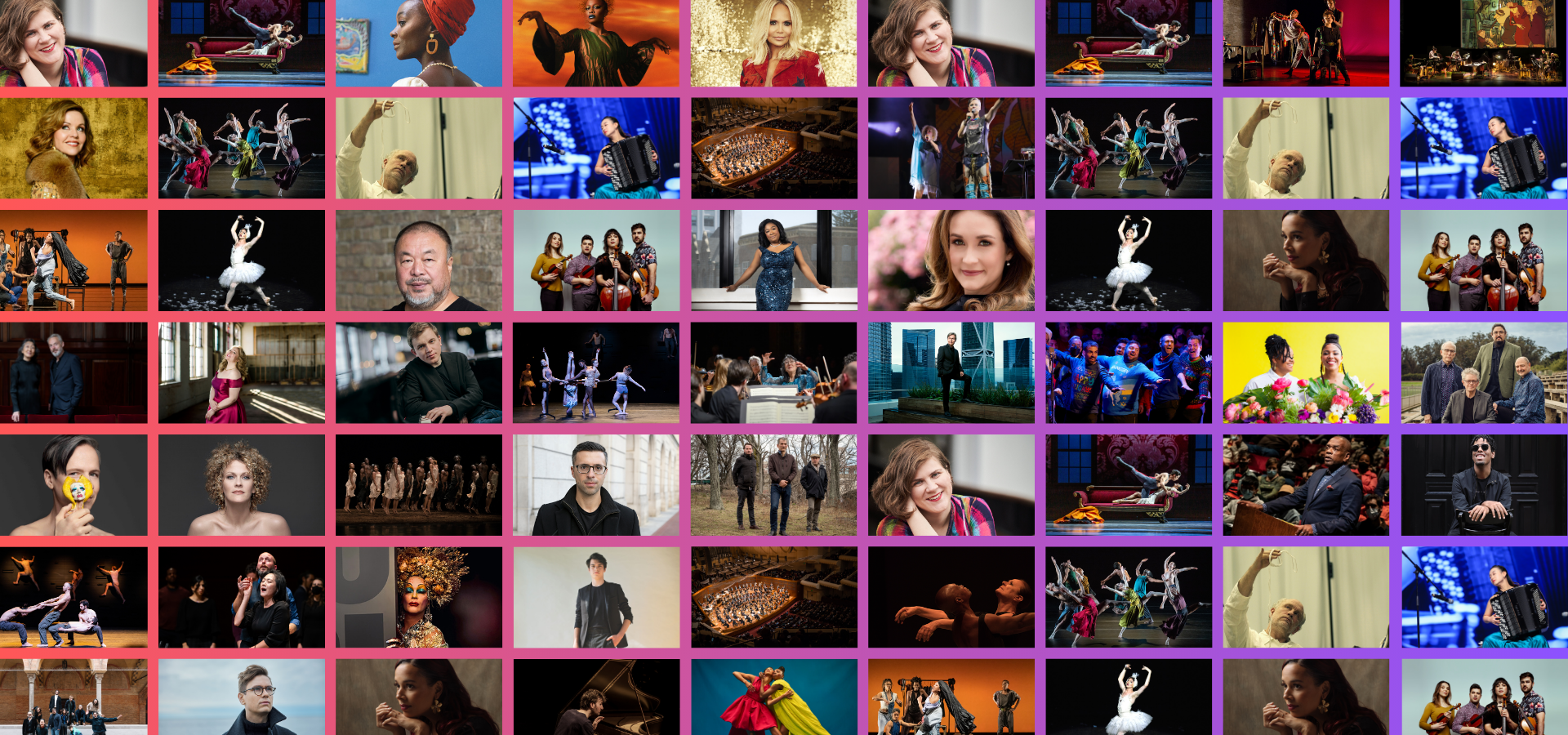
Tribute to a Terrific 2023–24 Season
Thank you for joining us!
Video by Tiffany Valvo, Cal Performances’ Social Media and Digital Content Specialist
From September 2023 through May 2024, we celebrated the work of world-renowned performing artists and felt the power of live performing arts alongside you, our incredible audience. Together, we experienced ~80 music, dance, and theater performances; considered a multitude of perspectives—both artistic and academic—on our Illuminations theme of “Individual & Community”; engaged in a special residency with the one and only Mitsuko Uchida; hosted an enjoyable and impactful gala evening celebrating our longtime partners at Alvin Ailey American Dance Theater; and created opportunities for younger generations to foster a relationship with live performance; to name a few highlights.
Before we fully turn our attention to the incredible 2024–25 season that lies ahead, we wanted to offer this brief video as a send off to reminisce on all the magic that took place on our stages and in our halls over the past nine months. On behalf of Cal Performances, thank you to each one of you who played a role in building community and supporting the performing arts in Berkeley!
Tags
Jeremy Geffen Introduces the 2024–25 Season
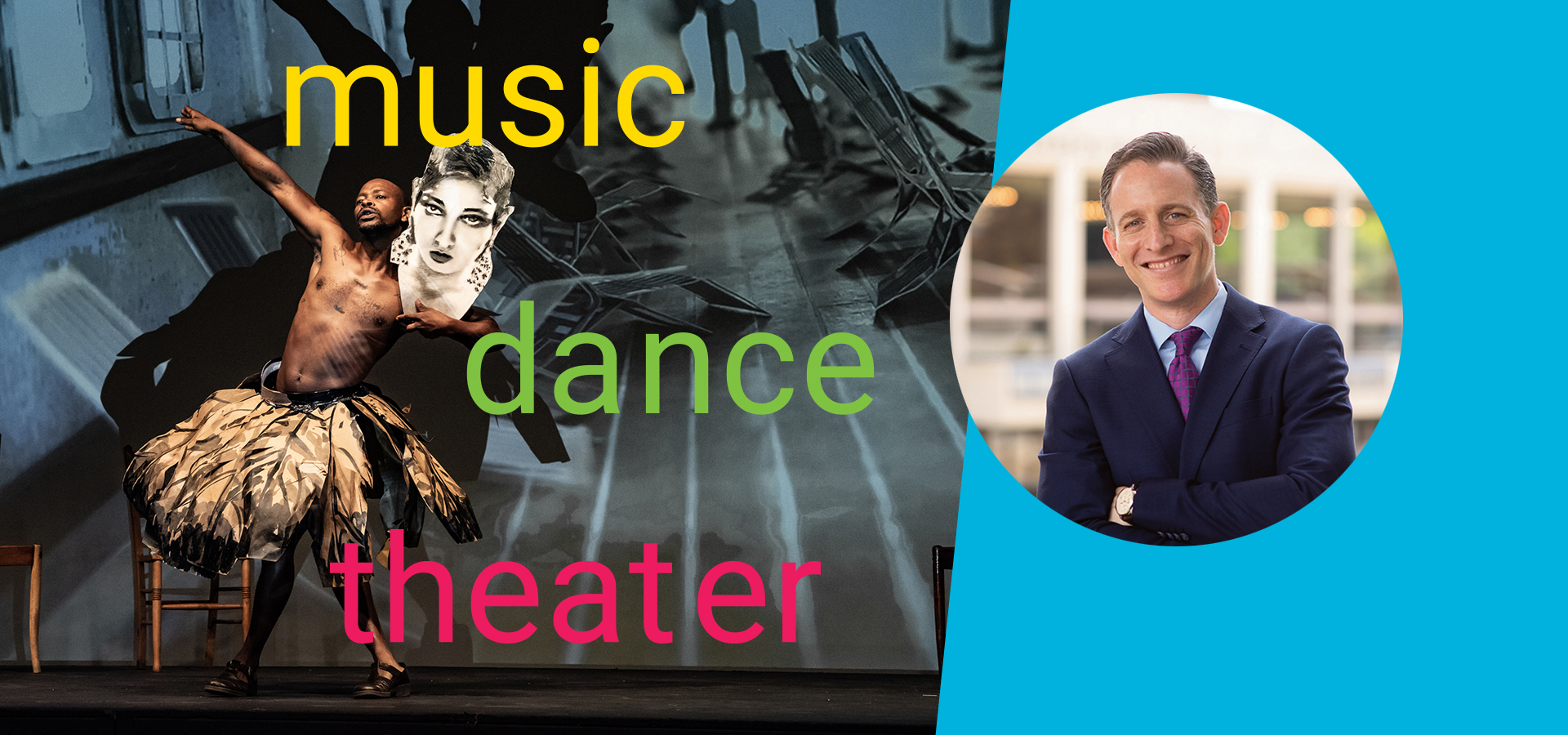
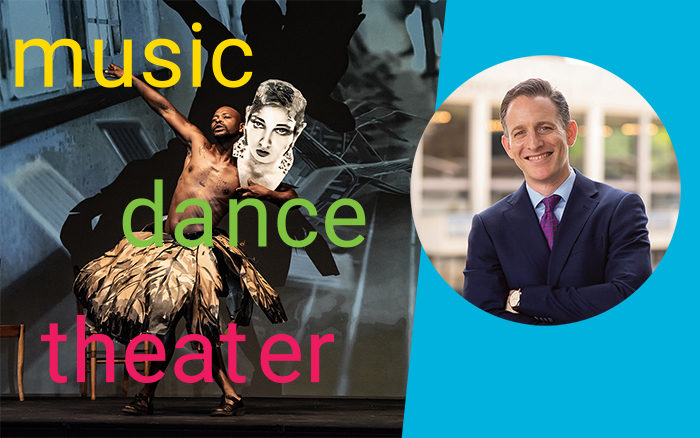
Jeremy Geffen Introduces the 2024–25 Season
A Letter from Executive and Artistic Director, Jeremy Geffen
By Jeremy Geffen, Cal Performances’ Executive and Artistic Director
It is my pleasure to welcome you to Cal Performances’ 2024–25 season! Over the coming year, we’ll focus our artistic spotlight on fresh perspectives, captivating stories, and brilliant talent in presentations that expand the boundaries of the performing arts and inspire us to engage more deeply with the world around us.
This year, our Illuminations theme, “Fractured History,” will tap into the arts’ ability to expand our worldviews. Through performances as well as related events with UC Berkeley thought leaders, Illuminations will introduce nuanced accounts and powerful new voices to enrich our understanding of the past and explore how our notions of history affect our present and future.
As part of Illuminations, we will re-engage the brilliant creative mind of William Kentridge, whose SIBYL (2022–23 season) still ranks among the most transformative works of art I’ve experienced. In spring 2025, Kentridge will bring the Bay Area premiere of The Great Yes, The Great No, a chamber opera co-commissioned by Cal Performances. Evoking South African musical traditions—interwoven with Kentridge’s unique brand of drawing, projection, and sculpture—this production reimagines a sea voyage of WWII refugees to consider complex ideas, including cultural exchange and colonization.
Another Illuminations artist in our season will double as our artist in residence: powerhouse soprano Julia Bullock. Having been transfixed by her profound technical gifts and gravitas—not to mention the beauty of her voice—at the onset of her career, Cal Performances will welcome Bullock back as one of the most in-demand sopranos and artistic thought leaders of our time. During her residency, Bullock will participate in campus and community activities and give two performances, including the West Coast premiere of a newly staged production of Olivier Messiaen’s song cycle Harawi to open our 2024–25 season.
On the topic of residencies, the Maria Manetti Shrem and Elizabeth Segerstrom California Orchestra Residency will feature three performances by the legendary Vienna Philharmonic under preeminent conductor Yannick Nézet-Séguin, making his first appearance in Berkeley with these concerts. Since its debut at Cal Performances in 2011, this peerless orchestra has performed in Berkeley more often than anywhere on the West Coast, fostering a special relationship with Bay Area audiences. Its return will be further celebrated during Cal Performances’ gala on March 7, 2025, in conjunction with the performance that evening.
Finally, I can think of no better way to conclude this preview than with two highlights of yet another breathtaking dance season. First, Twyla Tharp Dance’s Diamond Jubilee represents a highly personal and joyful toast to the six decades of artistic output that have made her one of today’s most recognizable choreographers. Additionally, world-renowned dance theater troupe Grupo Corpo will make its Cal Performances debut in a program that speaks to its technical mastery and its multifaceted stylistic influences as a contemporary Brazilian dance company.
I look forward to engaging with many fresh artistic perspectives alongside you, and to witnessing how these experiences will move us in profound and incalculable ways made possible only by the live performing arts.
Explore More 2024–25 Season Features
Artist in Residence Julia Bullock in Conversation with Jeremy Geffen

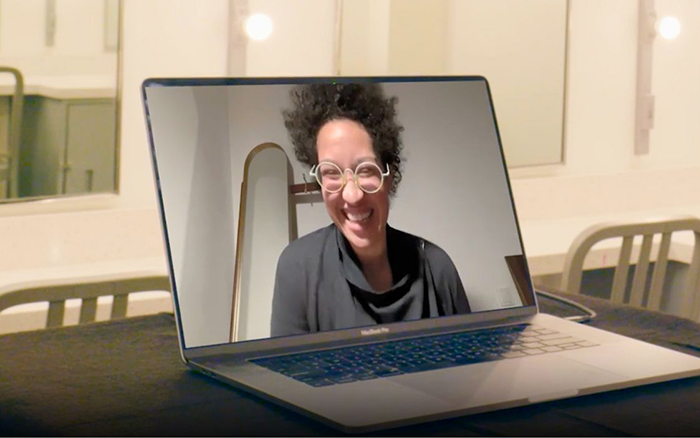
Artist in Residence Julia Bullock in Conversation with Jeremy Geffen
“With fractures in our consciousness, part of the joy at least I feel as a musician… I’m healing some of those fractures, or at least trying to rebuild some things.”
Cal Performances welcomes soprano Julia Bullock as 2024–25 season artist in residence, with two performances that showcase her radiant voice, keen interpretive intelligence, and boundless artistic imagination. Her first performance in American Modern Opera Company’s staging of Olivier Messiaen’s song cycle Harawi opens Cal Performances’ season and is a core program in Cal Performances’ season-long Illuminations theme of “Fractured History.” Her second performance, alongside Orchestra of the Age of Enlightenment, explores some of the most iconic Baroque works performed today.
In this video, Cal Performances executive and artistic director Jeremy Geffen interviews the soon-to-be artist in residence about her connection to the programs she is bringing, her philosophy on “Fractured History,” and her excitement around engaging the UC Berkeley campus community.
Transcript
Jeremy Geffen:
Hello, everyone. I’m Jeremy Geffen, executive and artistic director for Cal Performances. It is my great pleasure to have with me today in Cal Performances 2024–25 season, artist in residence, soprano Julia Bullock. Hi, Julia.
Julia Bullock:
Hello!
Jeremy Geffen:
I’m so happy to be able to see more of you next season. You’re bringing two unusual projects, or one project that is certainly more off the beaten track than the other. So I wanted to start out by talking about these two projects, one of which will open our season, and that is the staged version of Messiaen’s song cycle, Harawi, and what exactly that will entail and what it means.
Julia Bullock:
Sure. Well, I’m just happy, always thrilled to come back to Cal Performances. It’s just a wonderfully warm environment and a welcoming audience. So Harawi is a piece that I fell in love with… It was over ten years ago, I guess, now. I just spent a day going through the poetry and also all of the various recordings that I could find of this 50-minute song cycle that Messiaen wrote for voice and piano. Initially, I had the idea of performing this work with another singer and also with two pianists because the piece deals with duality and actually dichotomies in pretty extreme ways—so, the love relationship, life and loss, it deals with the embodiment of man and woman.
I guess as I grew a little bit as a singer and also as I started to perform more one-woman shows and also give a lot more recitals, it was getting harder and harder for me to imagine splitting the piece apart just as a vocalist. But then, I met some wonderful dancers who are a part of the American Modern Opera Company, of which I’m also a founding member. Because the arts practice, the performance arts practice of harawi also incorporates dance, I thought, “Okay. Well, what if we added dancers into the mix?” So to balance it, to still honor the original idea of four people, there are two dancers, myself, and then also a pianist. That includes: Conor Hanick is the pianist, Bobbi Jene Smith also worked on the choreography and will be dancing in the piece, alongside Or, who is her husband. Anyway, so we’re all… We’re just a happy quartet up there going through this incredibly intense material.
When I first was looking at Harawi and the title… Honestly, I did not know anything about the arts practice of harawi at all, which is music and movement that originated in the Andes Mountains. Messiaen was first exposed to this art form through an anthology that was published by some French musicologists. They went and just hand transcribed some songs. Actually, if you look through this anthology, some of the lyrics and also the melodies, Messiaen directly quoted.
Jeremy Geffen:
There are two things that I wanted to pick up on from what you just said, which is our Illuminations theme for next season is “Fractured History,” which is about really how we examine history, how history is not static; and our understanding of ourselves, the culture in which we live, grows based on new information or influences that come to us. As you were speaking about Harawi, I thought about the fact that, here is this composer writing on the other side of the planet from where some of the source material or the inspiration came from. Want to see what your thoughts about that.
Julia Bullock:
Well, questions of appropriation are big and important. I think as long as those of us who are re-engaging with work over and over again—and we’re re-engaging with history constantly… I’m dealing with classic art and the classics. All that means really is that we are returning to the material again and again, hoping that it will become more illuminated or we will somehow become more illuminated in the process and learn something.
So I think as long as we are responsibly engaging with material—and then, therefore that means looking at history really closely, then the question of appropriation and then the erasure that sometimes or often accompanies that—that cycle can be stopped. So when we started as a group in American Modern Opera Company, when we started to talk about how to stage this work, and how we even wanted to begin the research process collectively, I said it was really important for me to at least engage in some conversations with practitioners of harawi. And so, I found two women who danced and sang. They lived in Germany and we just had a bunch of conversations. With fractures in our consciousness, part of the joy, at least I feel as a musician, and I guess an anthropologist in some maybe amateur way, I’m healing some of those fractures, or at least trying to rebuild some things.
Jeremy Geffen:
Your other performance, for many of us who have watched you on the opera stage in the United States, we haven’t had the opportunity to see you in Baroque repertoire, which I know has been a healthy part of your diet, especially in Europe. So I wanted to ask you about this project with the Orchestra of the Age of Enlightenment and finding that repertoire.
Julia Bullock:
Well, I mean, they just reached out to me saying, “We wanted to put a tour together in United States. What do you think?” …After just some conversations where they said the main focus is to say that the greatest hits, like these Baroque greatest hits—which are almost turned into clichés in one way or another— that they are really worthy, wonderful pieces of music. And to… I hate to use the word exploit in this context, but to just lay them out boldly and without apology side by side, let audiences enjoy them.
And so, I perform a lot of Baroque material outside of the United States. And really, it has been as active, I guess, as a lot of my contemporary singing when it comes to the opera field. But yeah, this is a chance to do it in concert with a really, really great ensemble.
Jeremy Geffen:
I wanted to ask you about the things that you will be doing on campus that actually don’t relate to that or that are in addition to the performance elements. I know that you had wanted to focus on a better experience of a masterclass essentially, or a better way of engaging with young singers around repertoire, and wanted to see if you could speak a little bit to that.
Julia Bullock:
Well, sure. Well, I don’t use the word masterclass ever when I’m working. And so, I just describe these opportunities as public work sessions. I just put out a call, an open invitation to whomever is interested. And so, the students themselves who are going to participate, they’re self-selecting. I just ask them to maybe reflect on the overall theme from Cal Performances for this coming season. And if there’s repertoire that comes up in it—it could really be from anywhere featuring any writer, composer, and singer-songwriter, just whomever they’re feeling called to lend their voice to—to just bring it into a public space for us to explore together. And hopefully, I can just share some tools, or we can share tools. Maybe they’ll teach me something as well. I hope so. Usually, that’s the case.
Jeremy Geffen:
And I think we all benefit from your curiosity.
Julia Bullock:
You’re sweet. Thank you.
Jeremy Geffen:
So looking forward to having you around next season. I thank you for your time and your generosity. And yeah, can’t wait to see you more often.
Julia Bullock:
Same. Well, always a pleasure, Jeremy. Thank you.
Explore More 2024–25 Season Features
The Fascinating True Stories That Inspired Each Illuminations: “Fractured History” Performance
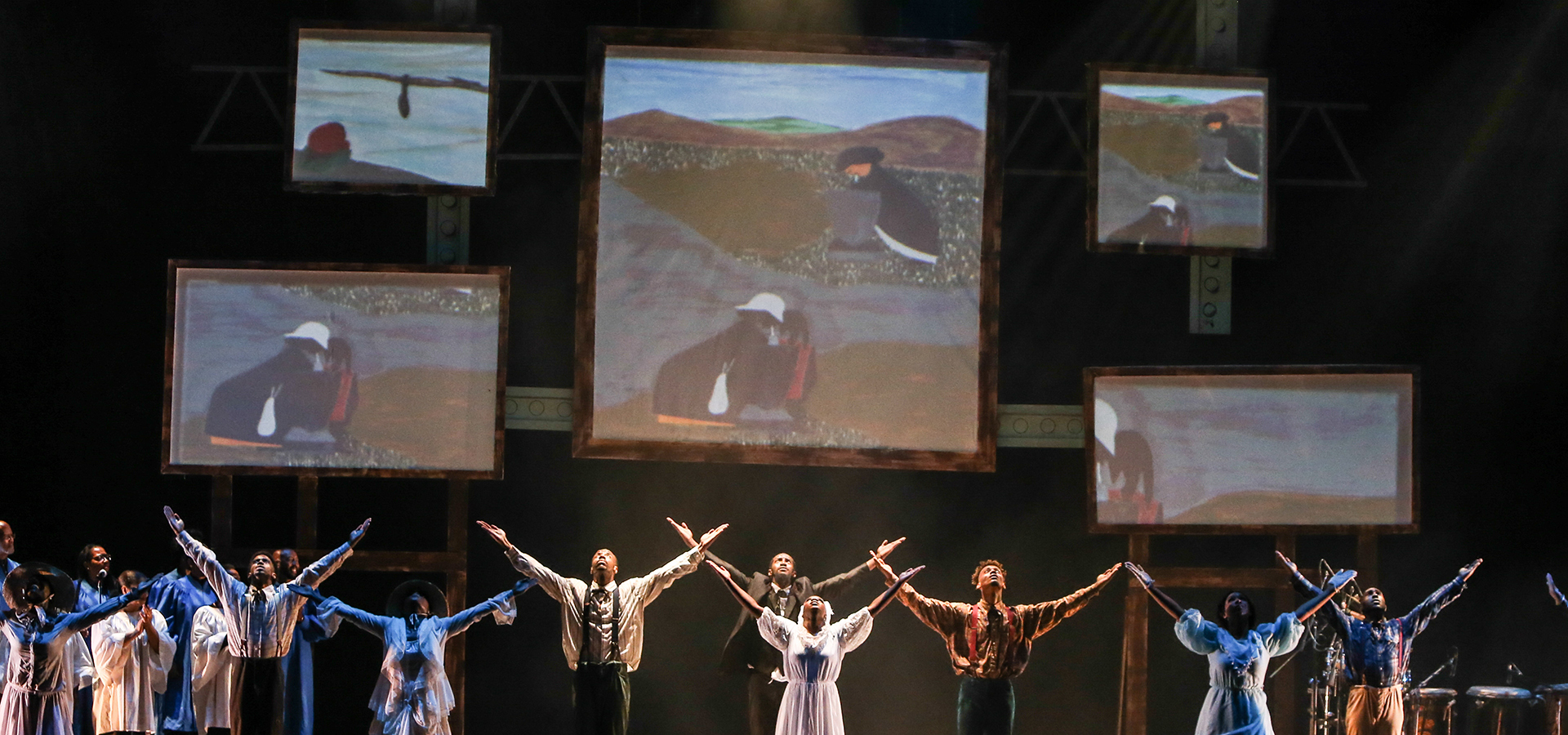
The Fascinating True Stories That Inspired Each Illuminations: “Fractured History” Performance
Understanding history, from foundation to fracture.
Our understanding of history is neither static nor complete; rather, it is dynamic and ever-changing. Examining historical narratives often entails re-evaluating what we consider to be fact, and finding new sources and voices with the potential to evolve our perspective. This year’s Illuminations theme of “Fractured History” unites the power of the performing arts with UC Berkeley scholarship to delve into what we truly know of our past, and how that understanding shapes our present and future.
To guide us in this season-long exploration, Cal Performances presents eight distinct performances, each with their own historical reference point. In this article, we will introduce the Illuminations performances on our 2024–25 season and probe the history that serves as backdrop and context for each work.
Olivier Messiaen’s Harawi, an American Modern Opera Company Production (Sep 27)
Harawi, directed by Zack Winokur and performed by Julia Bullock (soprano), Conor Hanick (piano), Bobbi Jene Smith (choreographer/dancer), and Or Schraiber (choreographer/dancer), reflects a new staging of Messiaen’s song cycle, originally written in 1945. Harawi is part one of Messiaen’s “Tristan Trilogy,” artistic works inspired by the myth of Tristan and Iseult. This myth is thought to be rooted in Celtic tradition as early as the 12th century, though scholars have drawn parallels to earlier romantic tragedies born out of Persian and Roman storytelling, among others, as possible inspiration for Tristan and Iseult. Variations in Tristan and Iseult’s story circulated in different regions in Europe during the medieval period and, around the 13th century, would frequently be woven into Arthurian legends.
The traditional plot centers Tristan as the nephew of Mark, King of Cornwall, whose kingdom is threatened by Ireland. A skilled swordsman, Tristan defeats the Irish King Morholt in battle but is severely wounded, and it is only by the magic of the Irish sorceress Iseult that Tristan is healed. Upon being healed, Tristan returns to Cornwall and speaks so highly of Iseult to King Mark that Mark wants to marry the sorceress. He tasks Tristan with returning to Ireland to retrieve Iseult and escort her to Cornwall, which Tristan accepts. During their journey, however, Tristan and Iseult unknowingly drink a love potion and, though the two try to act honorably and Iseult goes through with the marriage to Mark, their forbidden love remains a source of incredible longing.
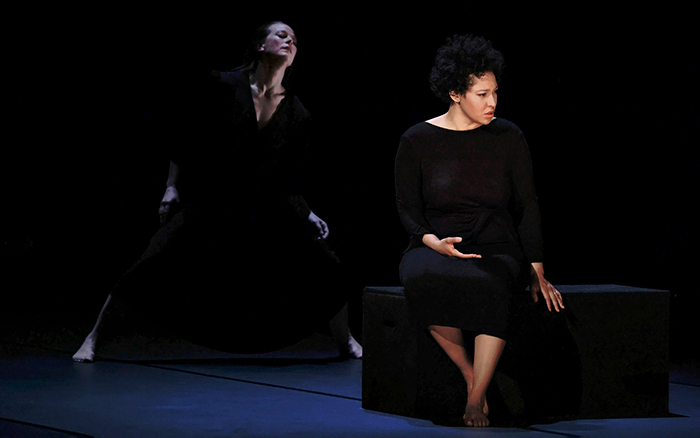
Intrigued by the myth as well as by musical cultures across the world, the French Messiaen decided to write a song cycle based on the Celtic legend in the style of Peruvian harawi, a genre of music and literature that originated from Indigenous peoples in the Andes that often contemplates life, tragedy, death, and connection to nature. (You can listen to an example of traditional harawi here.) Messiaen wrote the libretto primarily in his native French, though he weaves in bits of Quechua, a family of Indigenous Peruvian languages.
This performance involves multiple layers of rediscovering and recontextualizing history: not only do audiences encounter the myth of Tristan and Iseult through the lens of Peruvian harawi, but also Messiaen’s own interpretation is recontextualized by AMOC* ( American Modern Opera Company), which draws out nuances in the work and adds original choreography to accompany the 12 songs.
Step Afrika!’s The Migration: Reflections on Jacob Lawrence (Nov 2–3)
Step Afrika!, the Washington DC-based dance troupe, has a unique movement vocabulary that pulls from “percussive dance styles practiced by historically African American fraternities and sororities; traditional African dances; and an array of contemporary dance and art forms,” according to the company. In this production celebrating their 30th anniversary, the troupe explores the history of the Great Migration as depicted by artist Jacob Lawrence in his famed 1940s painting series.
In the US, the Great Migration refers to the movement of approximately six million Black people out of the South to other regions from the 1910s through the 1970s. The first period of the Great Migration (referred to simply as “the First Great Migration”) lasted from the 1910s–1940s and is the subject of Lawrence’s vibrant artwork. The migration itself was a result of a push and a pull: the pull of new job opportunities in cities outside of the South (given that many industrial laborers had vacated their positions to join WWI), as well as the push of racial violence and discrimination that, though a reality throughout the US, was particularly egregious in the South. Black people who settled in new cities—most popularly Philadelphia, New York, Detroit, Cincinnati, Chicago, and Milwaukee (The Bay Area would become a considerable destination during the Second Great Migration!)—did tend to have greater access to financial, vocational, and educational opportunities, though they continued to face challenges such as poor housing conditions and racial segregation and discrimination by Whites who saw with concern the cities’ demographic shift. This demographic shift would also inspire significant developments in Black art and culture, such as the Harlem Renaissance, which describes a flourishing of “poetry and prose, painting and sculpture, jazz and swing, opera and dance” that reflected Black experience at that time.
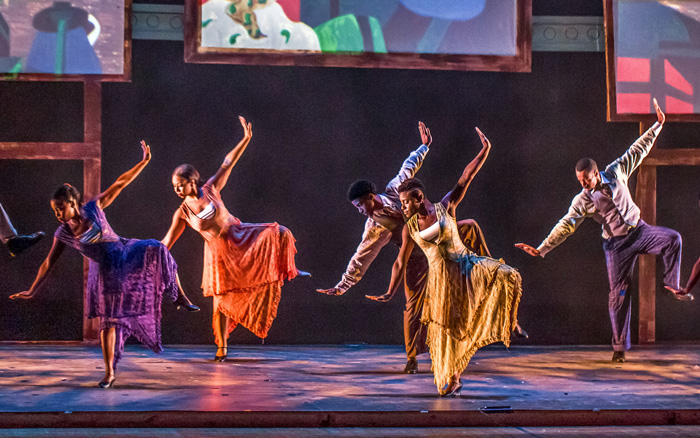
Painter Jacob Lawrence was personally shaped and inspired by the Great Migration. Lawrence was born in New Jersey, after his parents had moved from the South during the early years of the Great Migration. The family relocated to Harlem when Lawrence was 13, providing him with the opportunity to witness and participate in the Harlem Renaissance. He would become nationally recognized in his early 20s for his paintings depicting Black historical figures and modern life. Perhaps most notably, his 60-panel The Migration Series published in 1941 with funding from the Works Progress Administration, a federal government program designed in part to boost employment following the Great Depression. The popular series depicts many elements of life in the South, the experience of transitioning to the North, and the challenges and opportunities faced as a result of the Migration. At the time the series was published, Lawrence was still seeing dynamic effects of these demographic shifts and in fact acknowledged at the end of his series that the Migration was ongoing.
Step Afrika!’s performance meditates on Lawrence’s interpretation of this important period in American history and utilizes direct projections of the paintings throughout the performance. Notably, as part of “Fractured History,” this dance performance adds a new artistic lens through which to contemplate both the Migration and Lawrence’s renderings in the present day.
Dover Quartet in works by Jerod Impichchaachaaha’ Tate, Pura Fé, Jessie Montgomery, and Dvořák (Nov 3)
The distinctly American Dover Quartet—founded when its members were students at the Curtis Institute of Music—returns to Cal Performances with a program comprising four works, each with its own perspective on what defines American sound.
The oldest of these works, Dvořák’s American Quartet, was written during the Czech composer’s years in the United States, when his main goal was to discover and engage with American music. One of the most popular chamber pieces played today, Dvořák’s twelfth string quartet was inspired by his trip to the small Czech immigrant town of Spillville, Iowa, on vacation from his position at National Conservatory in New York City. Of his piece, Dvořák wrote: “As to my opinion, I think that the influence of this country (it means the folk songs as are Negro, Indian, Irish etc.) is to be seen, and that this and all other works (written in America) differ very much from my other works as well as in couleur as in character…” Dvořák was particularly inspired by Black and folk musical traditions, so much so that, when String Quartet No. 12 was first circulated, it was nicknamed “Negro” (despite lacking an authentic connection to or collaboration with the Black community) before it came to be known as “American Quartet” in the 1950s. Though many have questioned whether traditional American melodies can truly be distinguished in the quartet, the work is a unique reflection of a newcomer’s perspective on what he understood American sound to be.
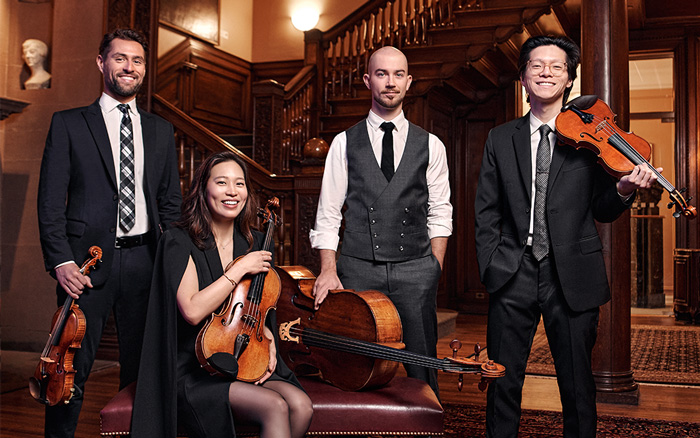
The first work on Dover’s program, Strum, is similarly inspired by “American folk idioms” as well as “the spirit of dance and movement” in the US. Composer and violinist Jessie Montgomery finalized the work as part of a performance for the 2012 Sphinx Competition, an annual competition for Black and Latinx string players. Born in Manhattan’s Lower East Side in 1981, Montgomery was raised in an environment that was at once musically and socially engaged, and she infuses her comprehensive understanding of the American experience—including its cultural heritage and sound—into her work as a composer, educator, and advocate.
The two remaining works on the program speak to a Native interpretation of American sound, thanks to the artistic vision of Jerod Impichchaachaaha’ Tate. Tate, who identifies as a “Chickasaw classical composer,” has made it his mission to spotlight and modernize Indian musical traditions for a contemporary audience, and uses tribal melodies, rhythms, and stories to raise awareness of Indian artforms and culture as well as to draw out poignant messages he feels are universally resonant. The first half of Dover’s program features an arrangement by Tate of Pura Fé’s Rattle Songs. Pura Fé (who performed with The Silkroad Ensemble as part Cal Performances’ 2023–24 season) is a Tuscarora artist and co-founder of the Ulali Project, self-described as “the first Indigenous women’s group to create their own sound from their strong traditional roots and personal contemporary styles.” As the title suggests, Rattle Songs, composed for Ulali, features traditional Native rattles as part of its instrumentation. Additionally, the program features Tate’s own composition of a new work to be announced, which will add yet another lens through which to understand American musical traditions in the present day.
William Kentridge’s The Great Yes, The Great No (Mar 14–16)
Multidisciplinary South African artist and recent Cal Performances artist in residence William Kentridge returns to UC Berkeley for the Bay Area premiere of a new chamber opera that reimagines a historic sea voyage of cultural refugees from WWII-era Europe. Historical figures of both “New World” and “Old World” are imaginatively put in dialogue with one another to engage ideas that remain important for modern audiences, most notably, colonialism.
The setting of this work is an ocean liner called Paul Lemerle, which took multiple real life voyages of refugees from Marseille, France, to the French colony of Martinique in the Caribbean during WWII between the winter of 1940 and spring of 1941. At that time, Marseille was considered a “Free Zone,” meaning it was not under German occupation, though the fact that much of France was already occupied by Germany led to a collaborative policy between the French Vichy government and the Nazi party. While concentration camps—populated primarily by Jews but also Roma and Sinti people, individuals with disabilities, political dissidents (including communists and socialists), members of the now-LGBTQ+ community, and outspoken cultural opponents of the Nazi regime, among others—were already in use by this time, the official Nazi policy still endorsed expulsion of “undesirable” groups. The trips promised to take refugees from Marseille to Martinique as a pathway to the US, though the latter leg of that journey was often unrealized.

The specific 1941 voyage that serves as the historical backdrop for Kentridge’s work is documented as carrying 222 refugees. Though most would not be recognized today, among them were a few notable cultural refugees:
- French writer André Breton, who co-created surrealism as a means of “resolv[ing] the previously contradictory conditions of dream and reality into an absolute reality, a super-reality” following the shock of WWI;
- French anthropologist Claude Lévi-Strauss, who would later introduce structural anthropology as a means of identifying similar patterns between different cultures;
- innovative painter Wifredo Lam, who grew up in colonized Cuba and whose Afro-Cuban and Chinese heritage made him particularly intriguing to European artists;
- revolutionary Russian novelist, journalist, and historian Victor Serge, who supported Marxism and was particularly critical of Stalin in his works;
- and exiled German author Anna Seghers, a Communist who had warned of the dangers of Nazism in The Seventh Cross, a novel she penned nearly a decade prior to the voyage.
In his opera, Kentridge represents some of the aforementioned figures who made the historic journey to freedom by way of colonized land; but he also introduces a number of additional historical figures who were not on the original voyage, but whose voices represent philosophies that mingle and conflict with others’ on board. Captained by Charon, the ferryman of the Underworld on the River Styx, Kentridge’s vessel also includes:
- French writer Suzanne Césaire, who championed feminism, anti-colonialism, and surrealism;
- French poet (and husband to Suzanne Césaire) Aimé Césaire and French writers Paulette and Jeanne Nardal, who would contribute to the Négritude framework for “raising Black consciousness” as part of the African Diaspora in Paris during the 1930s;
- French Empress Joséphine Bonaparte, the first wife of infamous Emperor Napoleon Bonaparte, whose military conquests had ramifications for nations across Europe, the Americas, and parts of Africa;
- French philosopher and psychiatrist Frantz Fanon, who developed strong Pan-African, anti-colonialist, Marxist views that inspired movements for political freedom in multiple countries across Asia, Africa, and the Americas;
- American-born, French performer Josephine Baker (nicknamed “Black Venus”), who, in 1927, became the first Black woman to star in a major motion picture;
- and Russian revolutionary Leon Trotsky, who played a critical role in a number of Russian wars as well as in the formation of the Soviet Union in 1922; to name just a few.
All these characters combine in poetic scenes that explore what freedom may look like on the other side of their journey, and invite us to consider, too, the movement and exchange of ideas that have informed our consciousness over time.
Visit the performance event page for The Great Yes, The Great No.
Story Boldly’s Defining Courage (Apr 4)
Defining Courage is a multidisciplinary production by Story Boldly, an organization dedicated to “tell[ing] engaging stories about important chapters in history and teach[ing] others how to use digital media to share stories that matter.” The performance combines cinema—both historic footage and recent eyewitness accounts and reflections—with narration by Los Angeles-based news anchor David Ono and live original music to share the traditionally overlooked experiences of soldiers of Japanese descent fighting on behalf of the US during WWII.
Roughly two months after the bombing of Pearl Harbor by Japanese forces in December 1941—the act that pushed the US to actively fight with the Allied Forces during WWII— President Franklin Roosevelt issued an executive order to force the incarceration of 122,000 Japanese Americans living on the West Coast to promote “protection against espionage and against sabotage to national defense…” Of the 122,000 individuals who were split between 75 incarceration camps throughout the US, approximately two thirds were US citizens.
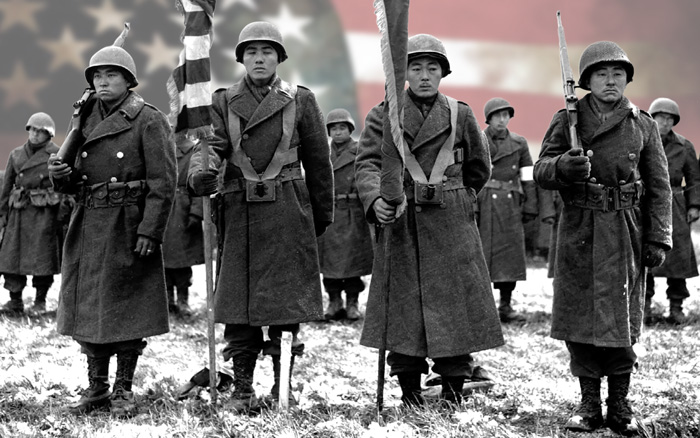
Furthermore, in March 1942, Japanese and Japanese American men in the US were deemed “enemy aliens,” meaning they were barred from military service. And yet, despite the criminalization and intense discrimination they faced, despite being forcibly relocated and locked down by the country they called home, many Nisei (a term referring to second generation Japanese Americans) clamored for the opportunity to join the US military. In February 1943, the government reversed its decision to bar Nisei enlistment, in part due to attrition on the battlefield, and in part due to the incredible service record of the Nisei division of the Hawaii National Guard, known as the 100th Infantry Battalion, which had been specially permitted to continue after the service ban. This second wave of Nisei soldiers formed the 442nd Regimental Combat Team, a new, all-Japanese military unit. Together they formed the 100th/442nd, with more than 12,000 men volunteering from Hawaii and the mainland—roughly 2,300 of whom came directly from incarceration camps.
While the 100th/442nd fought their way through Europe, there was one other unit made up exclusively of determined Nisei young men called the Military Intelligence Service (MIS), who served in the Pacific. The MIS used their Japanese language skills to crack into Japanese transmissions, sneak behind enemy lines, and provide other intelligence that gave the US an invaluable advantage.
Throughout WWII, thousands more Nisei would risk (and at times lose) their lives on behalf of the US. The 100th/442nd would come to be known as some of the bravest, most successful, and most highly decorated military teams in US history. At the time, the sacrifice of these soldiers was credited with “shortening the war by two years and saving countless lives,” per Story Boldly.
Defining Courage sheds light on the complicated experience Nisei soldiers had in grappling with their American identity, and reintroduces nuance in describing the history of a group that is often unacknowledged or oversimplified.
Grupo Corpo’s 21 and Gira (Apr 25–26)
The dancers of Grupo Corpo are known for their eclectic style, which draws on many facets of Brazilian music and dance—a melting pot rooted in the history of diverse groups (indigenous Indians, enslaved Africans, and colonizing Portuguese and Dutch), as well as all of their descendants) who have lived in and occupied Brazil together in recent centuries. Founded in 1975 by Paulo Pederneiras, whose artistic vision and choreography have had a lasting impact on the company, Grupo Corpo identifies foremost as a contemporary dance theater troupe; their heaviest influence is ballet, followed by folk and popular dance from Brazil. In this their Cal Performances debut, the company brings the Bay Area premieres of two works, each drawing on a different aspect of their culture.
In 1992, Rodrigo Pederneiras choreographed the ballet 21 for Grupo Corpo. The score was composed by Marco Antônio Guimarães for his percussion ensemble, Uakti. Named after an ancient legend from the Tukano Indians of the Amazon, the ensemble is known for custom building instruments out of PVC tubes, wood, glass and tin cans for their performances as well as utilizing more traditional instruments such as marimbas, various stringed instruments, and drums. The music and choreography combine in 21 to free the dancers from the tight restraints of traditional form, providing a rhythmic landscape through which to explore deeper meaning and the influence of Brazilian popular dance on their unique movement style.
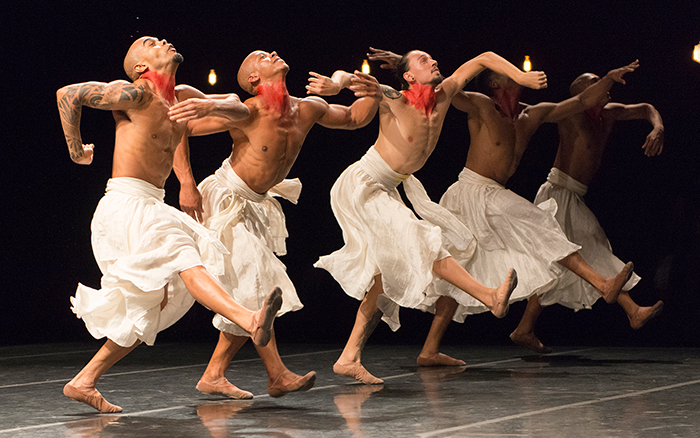
The second work on the program, Gira, was choreographed in 2017, also by Rodrigo Pederneiras, as a “reconstruct[ion] of the powerful glossary of gestures and movement” original to the rites of Brazilian religious traditions. Specifically, the choreography reflects Candomblé, an Afro-Brazilian religion influenced by Yoruba traditions; and Umbanda, a popular Brazilian religion that combines elements of Candomblé; Kardecism, which is an offshoot of Spiritualism that was founded in France but took root particularly in Latin America; and Catholicism, which was introduced by the Portuguese during colonization. Gira is danced to music by São Paulo band Metá Metá that combines ritual chanting with animal cries, bird calls, and saxophone. Collectively, the staging, costumes, and music emphasize the impact of Brazilian history, culture, and tradition.
The English Concert in Handel’s Giulio Cesare in Egitto (Apr 27)
Handel’s popular heroic opera, Giulio Cesare in Egitto (which translates to “Julius Caesar in Egypt”), was composed in 1724, but has a historical reference point dating back to roughly 48 BC, the year that Roman Emperor Julius Caesar met the Egyptian Queen Cleopatra.
While the opera is, of course, dramatized and romanticized, the union it portrays between Caesar (“Cesare” in the opera) and Cleopatra—both militarily/politically and romantically—is based in truth. At the time that the two met, Caesar, who had over time risen through the political ranks, had achieved a position of great power and influence in the vast Roman Empire. However, Pompey, a respected war hero who had at one time been very close allies with Caesar, now posed a threat to Caesar’s security as ruler. In an attempt to bring down his key rival, Caesar initiated the Roman Civil War in Italy in 49 BC. It was during the winter of 48 BC as war waged on that Caesar met Cleopatra VII (known today simply as Cleopatra), who was herself in a challenging political predicament.

As with Rome, Egypt was politically unstable as Cleopatra grew up, and she witnessed the rise and fall of her relatives during formative years: around the age of 18, Cleopatra was made co-regent of Egypt by her father, King Ptolemy XII, who had recently killed his other daughter, Bernice IV, to oust her from power. When Cleopatra’s father died a year later in 51 BC, Cleopatra’s co-ruler became her roughly 10-year-old brother, Ptolemy XIII (“Tolomeo” in the opera) who would strip her of power in 49 BC to claim more for himself. (It’s worth mentioning that, given his young age, it was likely that his advisors initiated the coup on his behalf.) Ptolemy would go on to authorize the execution of Caesar’s rival, Pompey, striking a friendly relationship between Egypt and Caesar. By 48 BC, Cleopatra was fighting a civil war against her brother, hoping to regain control of Egypt, and viewed Caesar as a powerful potential ally.
Shortly after their initial encounter, Caesar and Cleopatra became romantically involved and he did help restore her to power. In 47 BC, Cleopatra gave birth to a son believed to be Caesar’s; and in 46 BC, Caesar named himself lifelong dictator of Rome following his success in the civil war. Though the Queen of Egypt and Roman Emperor were not longtime lovers, they inspired interest and mystery even as they lived.
As one might expect, historical documents dating back to 48BC are extremely limited and leave much to the imagination when crafting a cohesive narrative. In fact, even during their lifetimes, the absence of reliable vehicles for mass communication meant that Caesar and Cleopatra were at once real leaders as well as mythicized characters among their people. In Handel’s opera, though key pillars of historical context (such as the fact that Ptolemy had Pompey executed and that Caesar struck up a romantic and military alliance with Cleopatra during civil war) remain themes in the artistic work, the details of how events unfold are often fabricated to create a more dramatic and compelling experience for the audience. Added elements include scenes of passion and seduction, complex revenge schemes, and ample opportunities for characters to reveal impassioned motivations for their actions, which is something that historic sources have generally lacked. As part of “Fractured History,” The English Concert’s performance invites audiences to consider how Handel’s opera expounds upon the military motivations of its main characters and tells a compelling love story that gives new meaning to Caesar and Cleopatra’s legendary bond.
Visit the performance event page for Giulio Cesare in Egitto.
This Land is Our Land Featuring Martha Redbone Roots Project and the American Patchwork Quartet (Feb 28)
American Roots singer and songwriter Martha Redbone and the American Patchwork Quartet are both known for melding various genres of music to share their own stories and to celebrate the musical heritage of many peoples in the US. In This Land is Our Land, the collaborators weave together a musical tapestry that showcases the rich cultural traditions comprising American sound.
Martha Redbone is of eastern Cherokee, Choctaw, and African American descent. Redbone was born in New York City and spent much of her childhood between her home in Brooklyn and her grandparents’ home in the Appalachian Mountains of Kentucky. She has shared that her family is one of the “original Cherokee families” still living in Black Mountain, Kentucky, and has explored much of their history in her music, including in her work Bone Hill, which follows four generations of Cherokee women in her family. Growing up in Black Mountain, Redbone was surrounded by mountain folk, gospel, and roots music that continues to influence her sound in combination with the musical traditions of her Native ancestors.
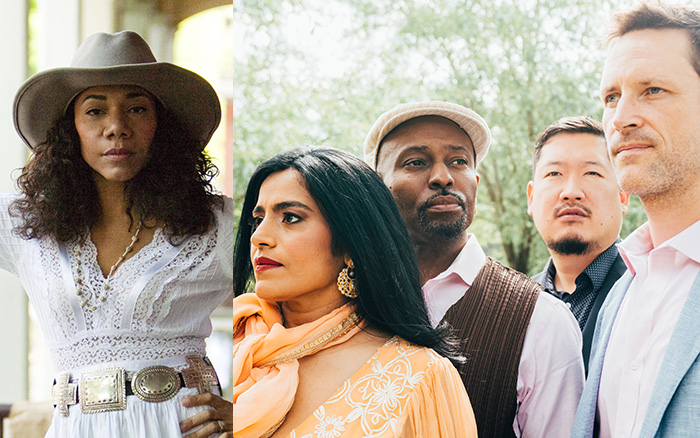
Of her own history, Redbone has shared how, throughout her life, she has been in between worlds, seen in some circles as “not Native enough” and in others as “not African enough.” She has made it a point to use her voice to educate audiences, not only on the resilience and lasting culture of her people (having realized while touring internationally that many audiences did not even know Native peoples in the US still existed), but also to express her unique identity and personal family history, stressing the importance of using music to “tell our own stories.”
She is joined by American Patchwork Quartet (APQ), which is “on a mission to reclaim the immigrant soul of American Roots Music.” APQ was founded in 2020 by South Carolina native Clay Ross, who is at once a jazz/roots guitarist and vocalist and a teaching artist, and who has served as an American Cultural Ambassador through multiple collaborations with the US State Department. He is joined by three artists who represent a broad range of ancestral and musical backgrounds: Falguni Shah, a Hindustani classical vocalist; Yasushi Nakamura, an Issei jazz bassist; and Clarence Penn, a drummer with roots in African American church traditions.
Though the group is committed to fostering unity through their music, they take the term “patchwork” seriously, thoughtfully curating pieces that honor the specific history, struggle, and triumphs of each culture being explored rather than blending them into one homogenous narrative. Stylistically, APQ serves as ”a potent symbol of unity in diversity” by tapping into a combination of American folk, jazz, country, West African, and East Asian musical traditions.
The performances described in this article only scratch the surface of all the fresh energy and perspectives being shared onstage during the 2024–25 season. Explore the rest of the events on our season here.
Explore More 2024–25 Season Features
Inspiring Joy: Performances that Amaze, Entertain, and Uplift
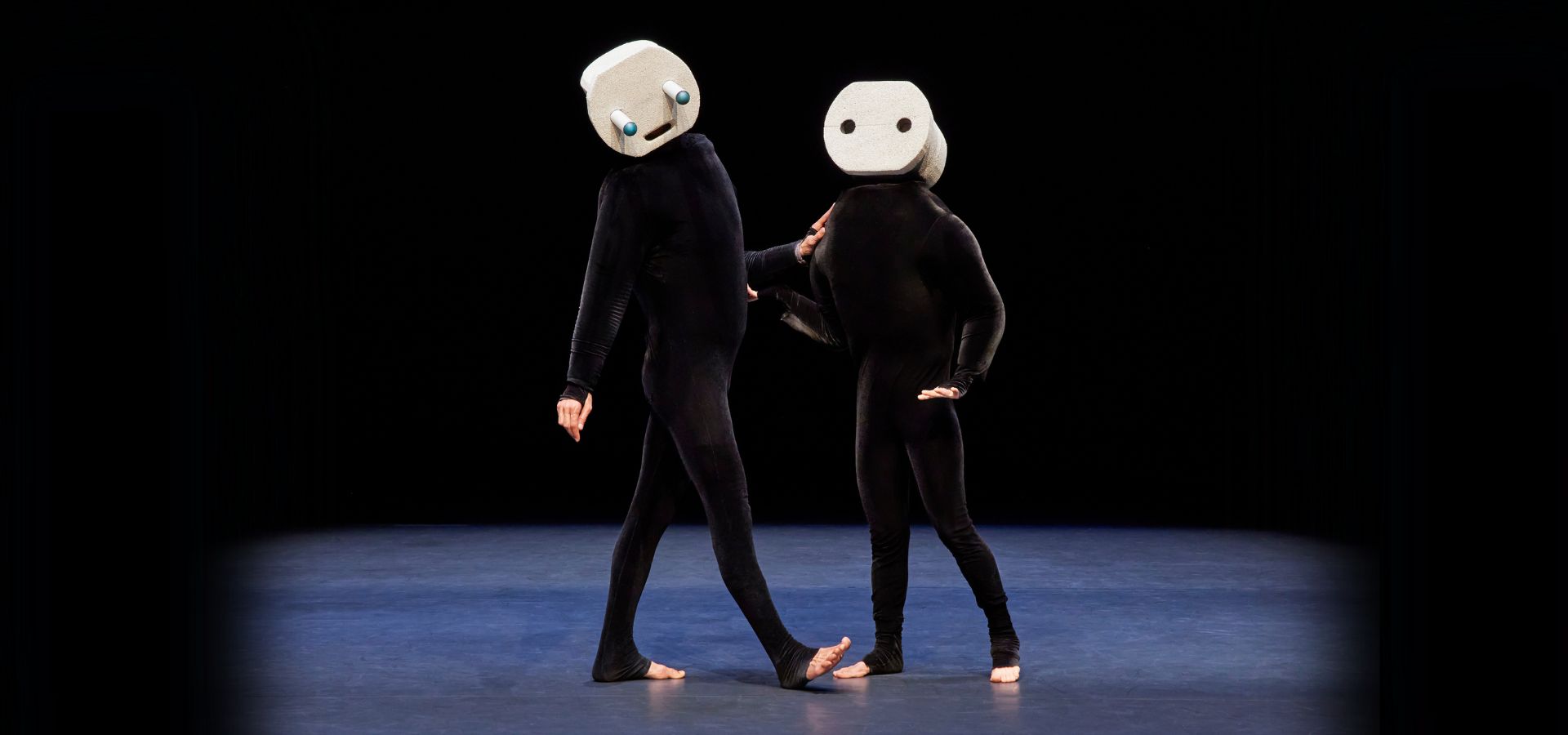
Inspiring Joy: Performances that Amaze, Entertain, and Uplift
“…Many of us first fell in love with performances because they can also bring a pure and profound sense of enjoyment, a chance to be amazed simply at the talent and spectacle of what we see on stage.”
In this video, executive and artistic director Jeremy Geffen shares seven performances, each offering a very different yet equally uplifting experience in the theater. From tap dancing to circus arts performance, from sing-along concerts to miming, the season has something for everyone—including, in many cases, young ones in the family, too! Watch below to get a sneak peek of:
Transcript
Jeremy Geffen:
We often talk about the arts’ ability to expand our understanding of the world and to unpack complex issues. Indeed, the performing arts can and do routinely do all of the above, and yet many of us first fell in love with performances because they can also bring a pure and profound sense of enjoyment, a chance to be amazed simply at the talent and spectacle of what we see on stage. In this video, I’ll highlight a few performances of our 2024–25 season that will leave your eyes sparkling, your jaw dropping, and your smile stretching as wide as it can go.
In October, Swiss mime troupe Mummenschanz returns to Cal Performances as part of its 50th anniversary season with a program ripe with visual spectacle. In the magical hands of Mummenschanz, toilet paper rolls transform into animated faces, pipes enjoin to create workable arms and legs, and clay masks are formed and deformed live on stage. Deeply imaginative, energetic and witty, this production will enchant audiences of all ages.
Theater and circus arts collide, quite literally, in SLAM!, a one-of-a-kind collaboration between Quebec-based Ex Machina and Cirque FLIP Fabrique. Under famed director Robert Lepage, circus artists dynamically interpret wrestling cultures from around the world, pushing the boundaries of the ring in this dramatic and electric extravaganza.
In November, Disney Concerts will bring Encanto: The Sing-Along Film Concert. This immersive and heartwarming concert experience invites Encanto lovers of all ages to sing along with a live band while watching the full film. The Grammy-nominated soundtrack features eight original songs by songwriter-composer Lin-Manuel Miranda with a score by composer Germaine Franco. Truly a treat for the whole family.
Just in time for winter holidays, New York’s Dorrance Dance returns to Cal Performances. Known for redefining tap dance, the company applies its playful and innovative spirit to transform a Christmas classic, The Nutcracker. Co-created by Michelle Dorrance, Hannah Heller and Josette Wiggin, this dazzling saucy satire is set to hot jazz rhythms that melt into the mesmerizing tapping on the stage.
In Japanese, the word KODO means “heartbeat,” as well as “drum” and “child.” In January, the revered taiko drummers returned to Berkeley for their Warabe tour, which honors the group’s desire to “play the drums with the simple heart of a child.” Drawing on more traditional origins of the art form, both musically and aesthetically, Warabe promises to envelop audiences with percussion that is seen and felt, just as much as it is heard.
Since their formation during a dark time in South Africa’s history, Ladysmith Black Mambazo has used their distinctive voice to encourage, inspire, and unify. In March, this multiple Grammy award-winning vocal harmony group will combine their powerful sound with a powerful message of freedom, hope, and love, as uplifting today as it has been for decades.
Broadway legend Patti LuPone leaves her program up to fate in Songs from a Hat. Stripped down in an intimate setting, fueled by music, banter, and unscripted storytelling, LuPone will, quite literally, draw from a hat titles of songs that have made her a household name, as well as a Tony, Olivier and Grammy Award winner. Her dynamite combination of powerful vocals and beguiling charm is sure to delight.
Explore More 2024–25 Season Features
The Making of William Kentridge’s The Great Yes, The Great No

The Making of William Kentridge’s The Great Yes, The Great No
William Kentridge and Nhlanhla Mahlangu talk music-making and translation, imagery, and historic inspiration.
In March 2025, William Kentridge’s The Great Yes, The Great No makes its Bay Area premiere at Cal Performances, which is also a co-commissioner of the work. Multidisciplinary artist William Kentridge—who was also UC Berkeley artist in residence in 2022–23—worked with theater maker Phala Ookeditse Phala and choral conductor and dancer Nhlanhla Mahlangu to create this new chamber opera, which fictionalizes the historic wartime escape from Vichy France to the colonized Martinique by, among others, the surrealist André Breton, the anthropologist Claude Lévi-Strauss, and the Cuban artist Wilfredo Lam. The surrealist production makes additions to the real life passenger list, introducing such notable figures as Aimé Césaire, Josephine Baker, Leon Trotsky, Diego Rivera, Frida Kahlo, and Joseph Stalin to explore the relationship between surrealism and the anticolonial Négritude movement as these passengers travel from the “Old World” to “New World.”
In Kentridge’s hands, the ship becomes a fantastical menagerie of thinkers, makers, and revolutionaries that combines lush South African choral music, dance, poetry, and anti-rational approaches to language and image, as well as Kentridge’s unique brand of animated drawings, video projection, masks, shadow play, and bold sculptural costumes.
See the performance event page, and read more about the true history that serves as the backdrop of the opera in our Illuminations blog article.
Transcript
William Kentridge:
It’s March 1941, a cargo ship filled with refugees escaping Vichy France. Surrealists, communists, André Breton, Claude Lévi-Strauss, the anthropologist, and on board the ship also is the captain who in fact is Charon, the ferryman of the dead, who not only are transporting these people across the Atlantic, but is able to call up historical characters from the past and even some from the future to reflect on the shift between Europe and its colonial past.
He calls up the great Martinican poets and philosophers, Aimé Césaire, Suzanne Césaire.
He calls up Frantz Fanon, the philosopher and psychoanalyst, he calls up the Nardal sisters, even calls up Josephine Bonaparte, Napoleon’s wife who came from Martinique. We have a duet of Joséphine Bonaparte and Josephine Baker, another transatlantic voyager.
Nhlanhla Mahlangu:
The creative process for making the music and the sonic landscape for The Great Yes, The Great No is quite unique. The Great Yes, The Great No is composed, is performed using the found text, the text from Aimé Césaire, the text from Fanon, the text from other great writers during the Surrealist movement and the Négritude movement.
William Kentridge:
We’re looking at the shift between a rationalist view of the world and the openness that the surrealists suggest and bring, and that is there in the poetry that comes from Martinique of a different world, of a different world to be made.
Nhlanhla Mahlangu:
There are different musical styles that we have chosen to make The Great Yes, The Great No: The sound of Martinique, the beguine music of Martinique, we are appropriating or borrowing from those influences. We are also looking at the French music of that time and also, not just taking it as it is and reproducing it, but how does it influence and how do we respond to it as South African performers or performers from the USA because it’s quite a big mixture in the collaborative process, so how does it speak to you as a composer, how does it speak to you as a performer, and how does it speak to you when you are translating it in your own language or in your own style? It’s a constant provocation, it’s a constant challenging what we are actually given.
William Kentridge:
We’re looking at the ways in which a certain kind of logic can be broken and a new way of thinking arrived at.
Nhlanhla Mahlangu:
There is a thing about translation that is a big part of The Great Yes, The Great No. The translation process to say, what is it that you find the text in French, with what happens to it when we translate it to English and then, from English we translate it back to Zulu, Tswana, siSwati, and then, what is the rhythm of the language? We are following the rhythms of the language when you have translated. That informs the melodies of how the chorus delivers the performances.
William Kentridge:
We use the Ship of Fools as a way to allow all questions to bubble and find potential answers.
Nhlanhla Mahlangu:
We are creating a surrealist piece and therefore, we have a great artistic license where different things that wouldn’t live together at the time, for us, there’s always juxtaposition of sound, juxtaposition of movement, juxtaposition of image that is going to be a gift for our audiences.



